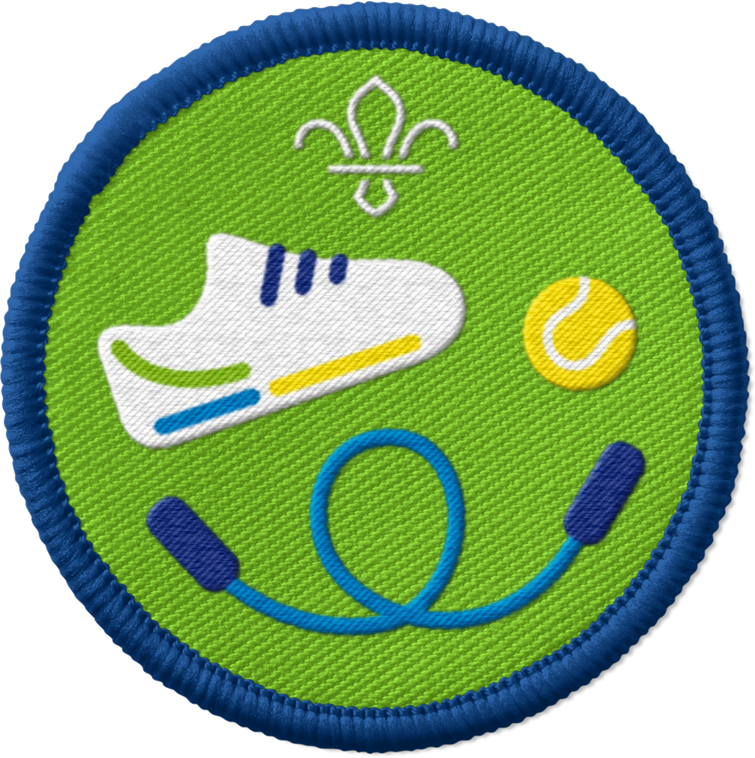Night at the big top
Before you begin
- This activity is all about holding a taster session. You could invite people to come to one of your regular meetings or save it for a special occasion like a camp.
- You could also meet for a workshop at a local circus school, if that works better for your group. Make sure you consider how everyone will get there in advance, and check for any travel updates on the day.
- One way to get everyone engaged and ready for the workshop is to make some circus equipment and practice basic skills. We’ve included ideas for DIY equipment, in case you’re after some inspiration.
Plan a visit
- Research local circus skills providers. There may be a few options (depending on where you live), so don’t be afraid to ask for quotes.
- Ask the provider for a DBS, insurance, and risk assessments. They should be able to provide them.
- Ask the provider what sort of activities they specialise in and what they’d recommend for the age of your group. Many providers are aware of the Circus Skills Activity Badge and will be happy to tailor their workshop to meet the badge requirements.
- Think about where you’ll host the workshop. Do you have plenty of floor space inside? If you’re planning to hold it outdoors, what will you do if it rains?
- Give the provider plenty of notice. Check if they need any information about access or transport – they may need level access, information about public transport links, or a parking space.
- Check in the day before (or even on the day) to make sure everything’s going to plan and they’re still going to join you.
- Make sure everyone taking part is prepared – do they want to think about questions to ask the provider? Do they need to come wearing certain clothes or shoes?
Create balloon juggling balls
You will need
- Balloons
- Rice
- Funnel
- Scales or measuring cups
- Scissors
- Measure the same amount of rice for each juggling ball – around 150 g is about right. The balls need to be even so you can juggle with them.
- Use the funnel to pour the rice into the balloon. You could also use sandwich bags or cling film.
- Tie or seal the rice-filled ball. You may want to cut any extra ‘neck’ off.
- Cut the neck off a second balloon. Wrap the main part of the balloon around the rice-filled ball. It should fit snugly and cover any seals, knots, or openings.
- Repeat step four with more balloons until the rice is tightly sealed inside. You could cut shapes from different coloured balloons to create a decorated effect.
- Repeat to make more juggling balls.
Craft poi
You will need
- Long socks – ones without a heel (also called ‘tube socks’) are best
- Sandwich bags
- Rice
- Funnel
- Scales or measuring cups
- Scissors
- Measure the same amount of rice for each poi – around 150 g is about right.
- Put the rice into the sandwich bag and tie or seal it. You could also use a tennis ball, balloon, cling film parcel, or even a rolled up sock.
- Place the rice-filled ball into the toe of the long sock. Secure it by tying a tight knot just above it.
- Tie another knot at the open end of the sock, to use as a handle.
- Repeat to make two poi. Use the knot at the top to hold the poi between your fingers when you’re practising.
Make a balance board
You will need
- A wooden board about 90 cm long, 30 cm wide, and 2.5 cm thick (depending on how much the users weigh)
- Two wooden stops about 25 cm (long/wide??? Please delete as appropriate).
- Between four and eight wood nails
- Rubber sheeting, sandpaper, or grip tape
- Thick PVC pipe
- Sandpaper
- Drill (or power screwdriver)
- Handsaw or hacksaw (only if you need to cut the materials to the right size)
- Spray contact adhesive
- Gather your materials. Wood could come from a shop or could be scrap – remember to check it for nails.
- Cut the wooden board so it’s a little wider than an adult’s shoulder width.
- Sand the ends of the wooden board.
- Make the surface of the board grippy by sticking rubber sheeting or sandpaper to it with spray contact adhesive. If you can get hold of an old skateboard, you could take the wheels off and use this instead.
- Attach wooden stoppers to the bottom of the board – one at each end. Use between two and four screws for each stopper (the more you use, the more secure it’ll be).
- Cut the pipe so it’s a little longer than the width of the wooden board.
- Put the wooden board on top of the pipe. People should stand with one foot on each end of the board and try to balance on the pipe so the board doesn’t touch the floor.
Create juggling sticks
You will need
- Wooden dowel rods or bamboo sticks
- Rubber tape
- Coloured electrical tape
- Duct tape
- Coloured felt or recycled materials
- Ruler
- Glue for fabric
- Cut the rods to size. One should be 50 cm long, two should be 40 cm long.
- Measure and mark the centre of the longer (50 cm) rod. This is the main flower stick.
- Wrap coloured electrical tape around the centre of the rod. Wrap the same coloured tape around the whole rod so it looks a bit like a candy cane.
- Wrap the rubber tape around the stick in the same way, so it fills in the gaps. The rod should look like a candy cane with alternating stripes of tape and no empty spaces.
- Test if the weight’s evenly distributed by balancing the middle of the rod on a finger. Adjust the middle marker if needed – a balanced stick is essential.
- Turn felt or recycled materials into tassels. You could cut three quarters of the way into the material to make a fringe, then roll them and stick them to each end of the rod. Make sure you use a strong fabric glue (for example, Fabri-Tac).
- Make two hand sticks in the same way, but don’t add the fabric tassels. Instead, wrap some extra rubber tape around each end.
Introduce circus life
- The person leading the session should invite the visitor to introduce themselves, explain a bit about the history of circus performing, and share a bit about their experience as a circus performer.
- The visitor should show off their skills with a short performance (between 5 and 10 minutes is perfect). They should pull out all the stops to show everyone what they can do after years of practice and dedication.
- Everyone should take the chance to ask the visitor any questions. They may want to think about exciting performances, if they’ve travelled anywhere, how they trained, or how they feel about the way circus life is shown in the media.
Give it a go
- Everyone should spend most of the session trying out circus skills and developing an understanding of the basics of each.
If you made equipment, feel free to test it out. Either way, the visitor should be able to provide what you need.
- If they want to, everyone could work towards a final showcase or performance.
Reflection
This activity was all about trying new things. Trying new things can make people feel lots of different things at once. How did people feel before they got stuck in to this activity? How about during and after? What would the world be like if people never found new things and gave them a go?
This activity was also about keeping on going. P.T. Barnum, one of the most famous circus entrepreneurs, said that ‘fortune always favours the brave’. What do people think this means? It took Barnum a lot of attempts (and probably a lot of failures) to achieve what he did. Do people think success often comes after multiple attempts? Why?
Safety
All activities must be safely managed. You must complete a thorough risk assessment and take appropriate steps to reduce risk. Use the safety checklist to help you plan and risk assess your activity. Always get approval for the activity, and have suitable supervision and an InTouch process.
- Active games
The game area should be free of hazards. Explain the rules of the game clearly and have a clear way to communicate that the game must stop when needed. Take a look at our guidance on running active games safely.
- Glue and solvents
Always supervise young people appropriately when they’re using glue and solvent products. Make sure there’s plenty of ventilation. Be aware of any medical conditions that could be affected by glue or solvent use and make adjustments as needed.
- Rubbish and recycling
All items should be clean and suitable for this activity.
- Scissors
Supervise young people appropriately when they’re using scissors. Store all sharp objects securely, out of the reach of young people.
- Sharp objects
Teach young people how to use sharp objects safely. Supervise them appropriately throughout. Store all sharp objects securely, out of the reach of young people.
Most providers will be able to work with you wherever you’re at – let them know how much practice everyone’s had so they come prepared.
Think about how you’ll make the session accessible for everyone. You may want to chat to people (and the visitor) beforehand to figure it all out.
If it’s likely to get noisy and lively, you may want to organise a quiet room or space people can go if it gets too much.
All Scout activities should be inclusive and accessible.
If this has captured everyone’s imagination, ‘DIY Circus Lab’ by Jackie Leigh Davis is full of more advanced equipment, structures, and skills including rigging a tight rope, partner acrobatics, and making your own tie-on stilts.
Everyone should have the chance to choose the activities. Ask people if they’re especially interested in one piece of equipment or skill, and see if it’s something the provider can offer.



